You can recite "Goodnight Moon" from memory even though you haven't read it in twenty years. You still think about that giving tree and whether it was actually a beautiful story about love or a cautionary tale about emotional manipulation. And don't even get started on Where the Wild Things Are — they're permanently living in your brain rent-free.
These best-selling children’s books of all time didn't just sell millions of copies. They rewired entire generations, created shared cultural references, and somehow managed to stick in your adult brain with the tenacity of superglue.
From psychological insights to surprising backstories, here are the childhood books that shaped your brain (and why they're still influencing your thoughts decades later).
Yep, you definitely know every single one.
The Best-Selling Children’s Books of All Time
1. Goodnight Moon - Margaret Wise Brown (1947)

Estimated Sales: 48+ million copies worldwide
Reading Age: 0-4 years
Over 48 million copies sold worldwide, making it one of the most recognizable bedtime stories in history. It's been translated into dozens of languages and spawned countless parodies, sequels, and merchandise. My favorite parody is probably Goodnight Goon. Yeah, give that one a read to your kiddos around Halloween time.
The Message:
Routine and ritual create safety and comfort. The world is predictable, controllable, and ultimately safe enough to let your guard down and sleep.
Why It Sticks:
Your brain associates this book with the transition from consciousness to sleep, creating powerful neural pathways between the story and relaxation. The repetitive structure mimics the natural wind-down process your brain craves before sleep. Adults often find themselves automatically relaxed just hearing the opening lines because their nervous system has been conditioned to associate this book with bedtime for decades.
Surprising Backstory:
Margaret Wise Brown wrote this as part of her "here and now" philosophy for children's literature, but many librarians initially hated it. The New York Public Library didn't even carry it until 1972 (25 years after publication) because librarians thought it was too simple and lacked literary merit. The book's success came entirely from parents and children, not literary experts. Brown also died tragically young at 42, just five years after writing this masterpiece.
2. The Very Hungry Caterpillar - Eric Carle (1969)
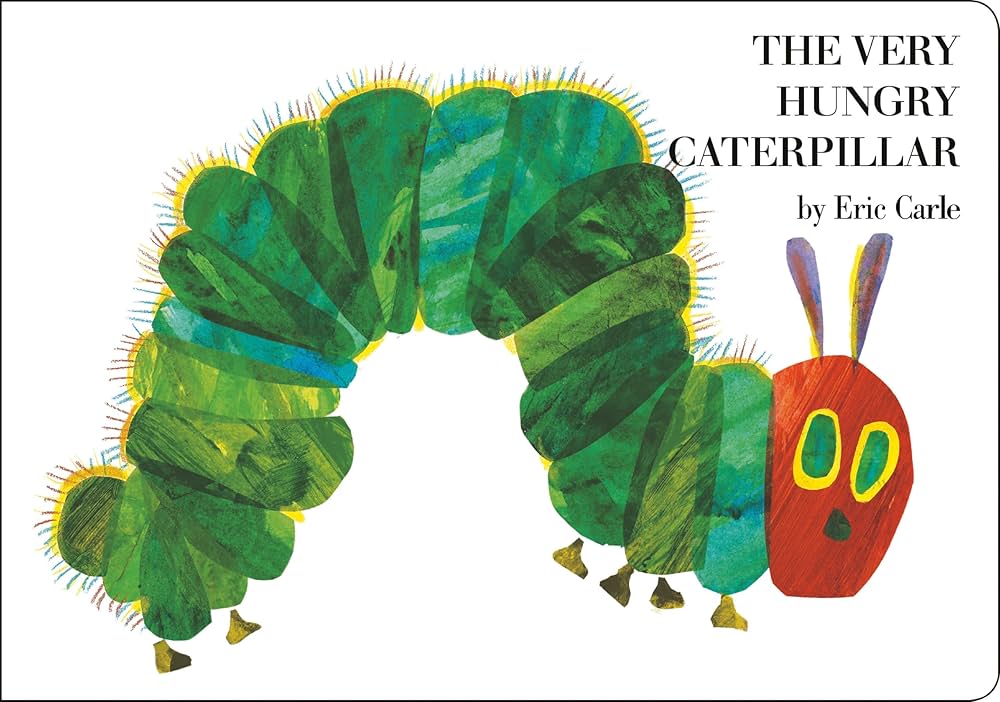
Estimated Sales: 50+ million copies worldwide
Reading Age: 0-5 years
Cultural Impact:
Translated into 66 languages and spawned an entire industry of caterpillar-themed merchandise, apps, and educational materials. It's become the go-to book for teaching counting, days of the week, and metamorphosis to preschoolers worldwide.
The Message:
Growth requires consumption, change is natural and beautiful, and sometimes you need to go through an uncomfortable cocoon phase before becoming who you're meant to be. Also, moderation is important — too much of anything makes you sick.
Why It Sticks:
The interactive holes in the pages create a tactile memory that engages multiple senses beyond just visual and auditory. Your brain remembers the physical act of poking fingers through holes, making this a full-body reading experience. The transformation story also mirrors human psychological development, creating subconscious resonance with our own growth processes.
Surprising Backstory:
Eric Carle originally planned to write about a bookworm eating through different books, but his editor suggested a caterpillar eating through food instead. The book was rejected by multiple publishers who thought the holes would make it too expensive to produce. Carle's signature tissue-paper collage art style was actually developed because he couldn't draw or paint realistically — what he considered a limitation became his trademark technique that's now instantly recognizable worldwide.
3. Where the Wild Things Are - Maurice Sendak (1963)
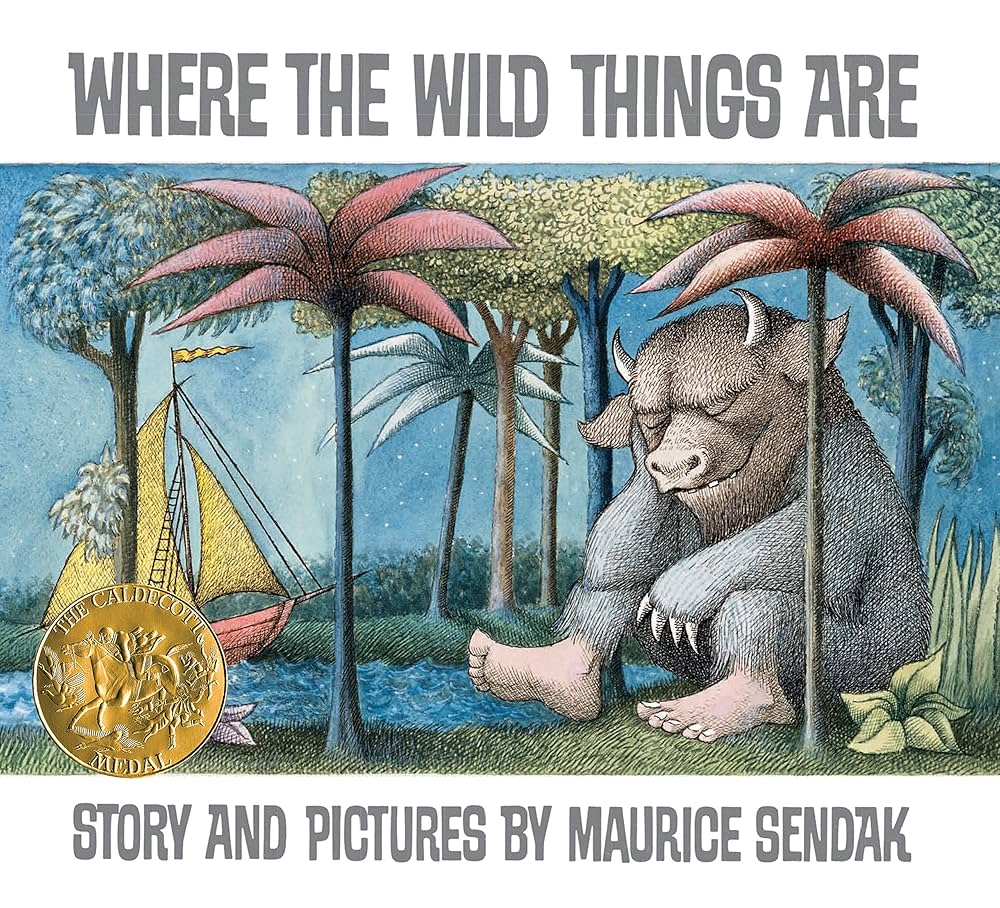
Estimated Sales: 19+ million copies worldwide
Reading Age: 3-8 years
Cultural Impact:
Revolutionized children's literature by acknowledging that kids have complex, sometimes dark emotions. Spawned a major motion picture, operas, and became a cultural touchstone for emotional expression in childhood.
The Message:
It's okay to feel angry, but you can't stay in that emotional state forever. Home and love are always there when you're ready to return from your emotional wilderness.
Why It Sticks:
This book validates children's intense emotions instead of dismissing them, creating powerful emotional memories. Adults remember feeling seen and understood by Max's journey. The book essentially gives kids permission to feel big feelings while showing them they can come back from emotional extremes.
Surprising Backstory:
Originally titled "Where the Wild Horses Are," Sendak changed it because he couldn't draw horses well enough. Many parents and librarians initially banned it for being "too frightening" and potentially encouraging bad behavior. Sendak received hate mail from concerned adults, but children loved it immediately. The "wild things" were actually based on his Brooklyn relatives who would pinch his cheeks and tell him how they could "eat him up" — a common but terrifying experience for young Sendak.
4. Green Eggs and Ham - Dr. Seuss (1960)
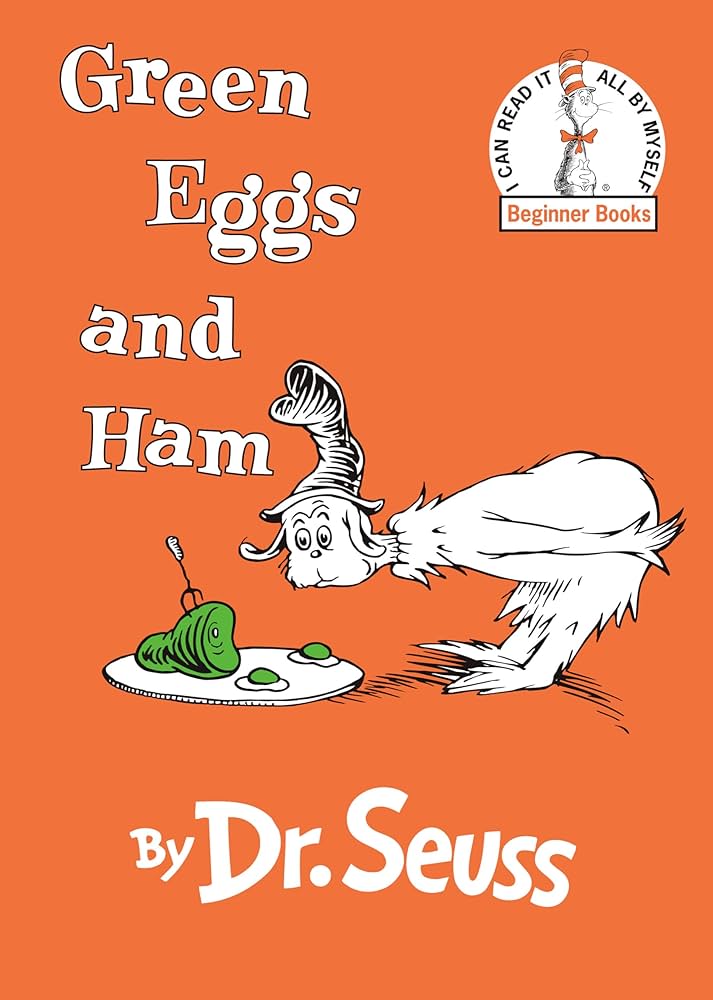
Estimated Sales: 8+ million copies worldwide
Reading Age: 3-7 years
Cultural Impact:
Became the poster child for encouraging kids to try new things. The phrase "green eggs and ham" entered common language as shorthand for being willing to experiment with the unfamiliar.
The Message:
Don't knock it until you try it. Your initial resistance to new experiences might be preventing you from discovering something you actually love.
Why It Sticks:
The book uses only 50 different words, making it incredibly memorable and easy to internalize. The repetitive structure creates a hypnotic quality that embeds the story deep in memory. Adults often find themselves using "Sam-I-Am" persistence in real-life situations.
Surprising Backstory:
Dr. Seuss wrote this book on a bet with his editor Bennett Cerf, who wagered Seuss couldn't write a book using only 50 words. Seuss won the bet but Cerf never paid up. The book was initially criticized for promoting pestering behavior, with some adults worried kids would learn to badger people who said no. Ironically, it became one of the most effective tools for getting kids to try new foods.
5. The Cat in the Hat - Dr. Seuss (1957)
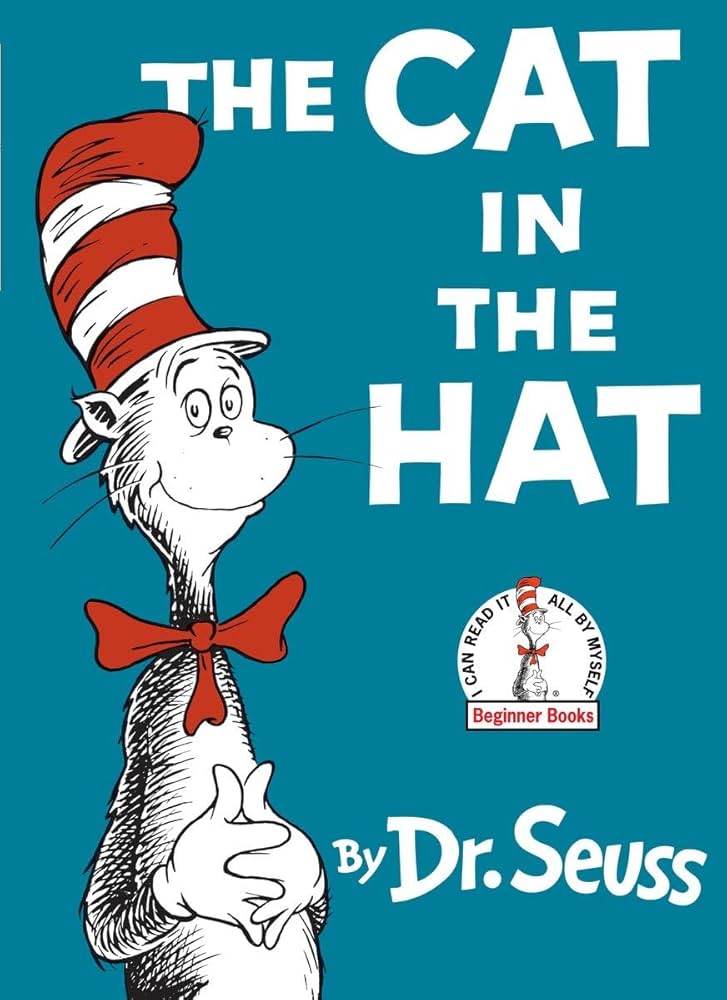
Estimated Sales: 10+ million copies worldwide
Reading Age: 4-8 years
Cultural Impact:
Single-handedly revolutionized early reading by proving that beginning reader books didn't have to be boring. Launched Beginner Books imprint and changed how publishers approached early literacy.
The Message:
A little chaos can be fun, but responsibility ultimately matters. Sometimes breaking rules leads to adventure, but you have to clean up your messes.
Why It Sticks:
The book perfectly captures the tension between wanting to have fun and knowing you shouldn't. It validates children's desire for excitement while acknowledging their anxiety about consequences. The Cat represents the id (pure impulse and fun) while the fish represents the superego (rules and responsibility).
Surprising Backstory:
Seuss wrote this specifically to replace the mind-numbing "Dick and Jane" primers that were putting kids to sleep instead of teaching them to read. He was limited to a vocabulary list of 223 words that first-graders could recognize. The book was controversial upon release, with some librarians arguing it promoted anarchy and disrespect for authority. The Cat's hat was inspired by a hat Seuss saw in an elevator, and he later said if he'd seen a zebra that day, the book would have been about a zebra.
6. Brown Bear, Brown Bear, What Do You See? - Bill Martin Jr. (1967)
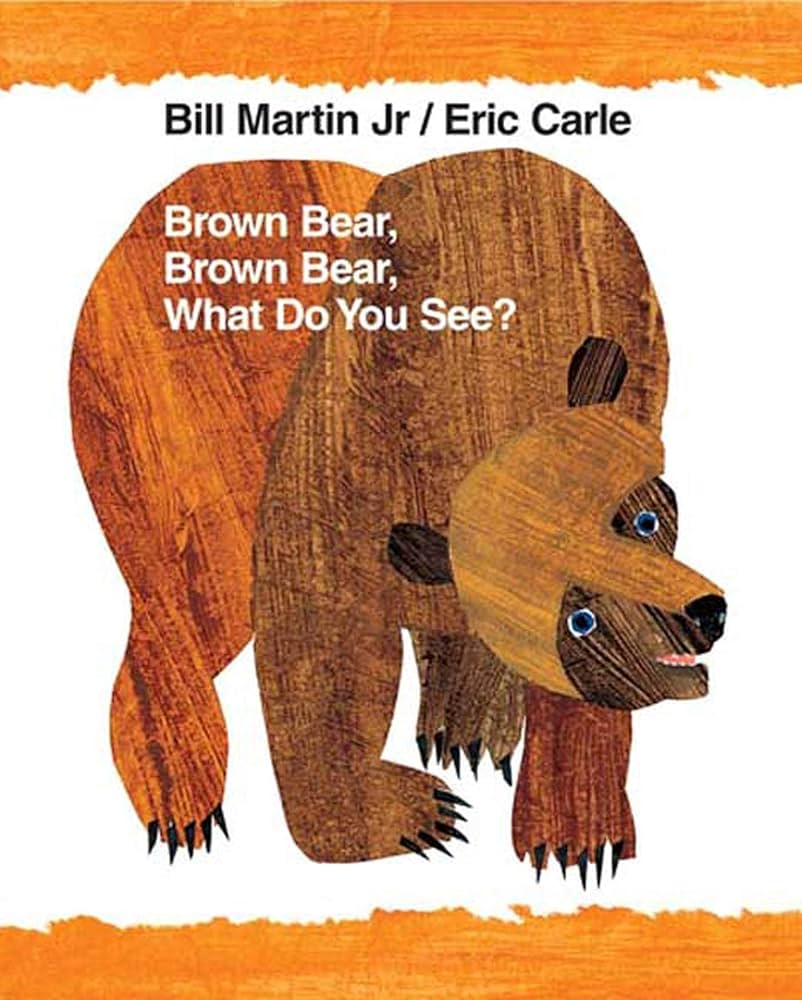
Estimated Sales: 16+ million copies worldwide
Reading Age: 0-4 years
Cultural Impact:
Became the template for predictable pattern books and launched Eric Carle's career as an illustrator. It's now considered essential for early childhood education and language development.
The Message:
The world is full of colorful, interesting things to observe. Looking and seeing are active, engaging activities that connect us to our environment.
Why It Sticks:
The call-and-response pattern mimics natural conversation, making it highly interactive and memorable. The repetitive structure allows even very young children to "read" along, creating early literacy confidence. Adults often find themselves automatically reciting the pattern years later.
Surprising Backstory:
Bill Martin Jr. wrote the text in 20 minutes after seeing Eric Carle's illustration of a red lobster in a magazine. Martin couldn't read until he was in college due to dyslexia, which influenced his focus on rhythm and sound over complex text. The book was inspired by his belief that children learn language through repetition and pattern recognition, not through phonics drills.
7. Chicka Chicka Boom Boom - Bill Martin Jr. & John Archambault (1989)
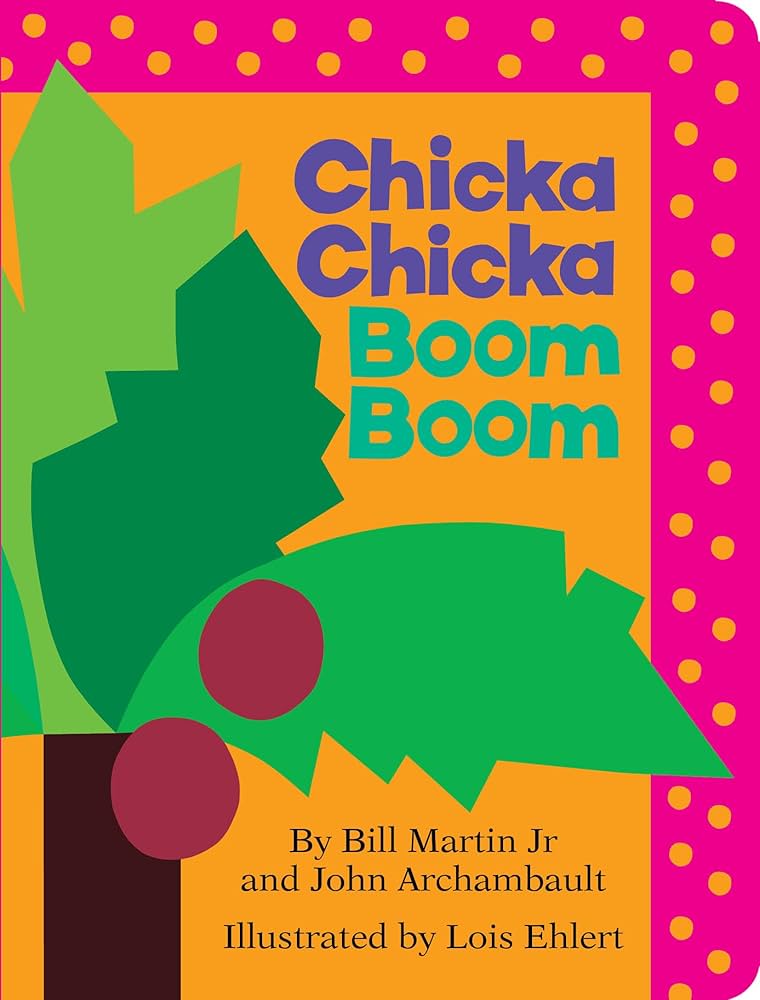
Estimated Sales: 12+ million copies worldwide
Reading Age: 2-6 years
Cultural Impact:
Made learning the alphabet feel like a party instead of a chore. Became the gold standard for alphabet books and influenced a generation of rhythm-based educational materials.
The Message:
Learning can be joyful, chaotic, and fun. Sometimes things fall apart, but you can always try again. Community support helps when you're struggling.
Why It Sticks:
The infectious rhythm makes it impossible to read without developing a beat, embedding the alphabet in musical memory. The coconut tree visual creates a clear, memorable framework for letter organization. Adults often find themselves humming the rhythm while doing completely unrelated tasks.
Surprising Backstory:
The book started as a simple alphabet song that Bill Martin Jr. wrote, inspired by African American spirituals and jazz rhythms. The "boom boom" sound was added when John Archambault suggested making the letters fall down. Many teachers initially worried the chaotic tone would make children think learning letters should always be entertaining, but studies showed it actually increased alphabet retention rates.
8. The Giving Tree - Shel Silverstein (1964)
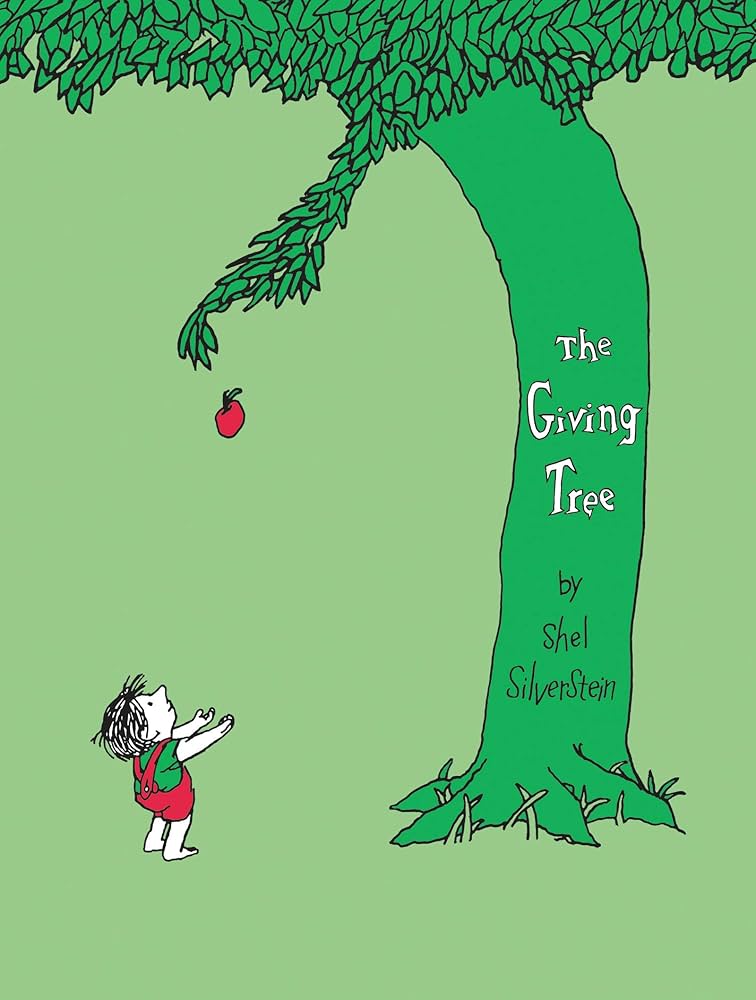
Estimated Sales: 10+ million copies worldwide
Reading Age: 4-8 years
Cultural Impact:
Became one of the most debated children's books ever written, sparking discussions about selfless love versus emotional manipulation. Referenced in everything from philosophy courses to therapy sessions.
The Message:
Unconditional love means giving everything you have to those you care about. Or, depending on your interpretation, it's a cautionary tale about codependency and taking advantage of someone's generosity.
Why It Sticks:
The book creates profound emotional ambivalence that gets stronger as you age. Children see a story about love and sacrifice; adults often see a disturbing relationship dynamic. This dual interpretation creates lasting psychological tension that keeps the book memorable and controversial.
Surprising Backstory:
Silverstein originally wrote this as a book for adults, not children. Many publishers rejected it because they couldn't figure out who the target audience was. The book has been banned in some schools for promoting unhealthy relationship patterns, while others celebrate it as the ultimate expression of parental love.
9. Love You Forever - Robert Munsch (1986)
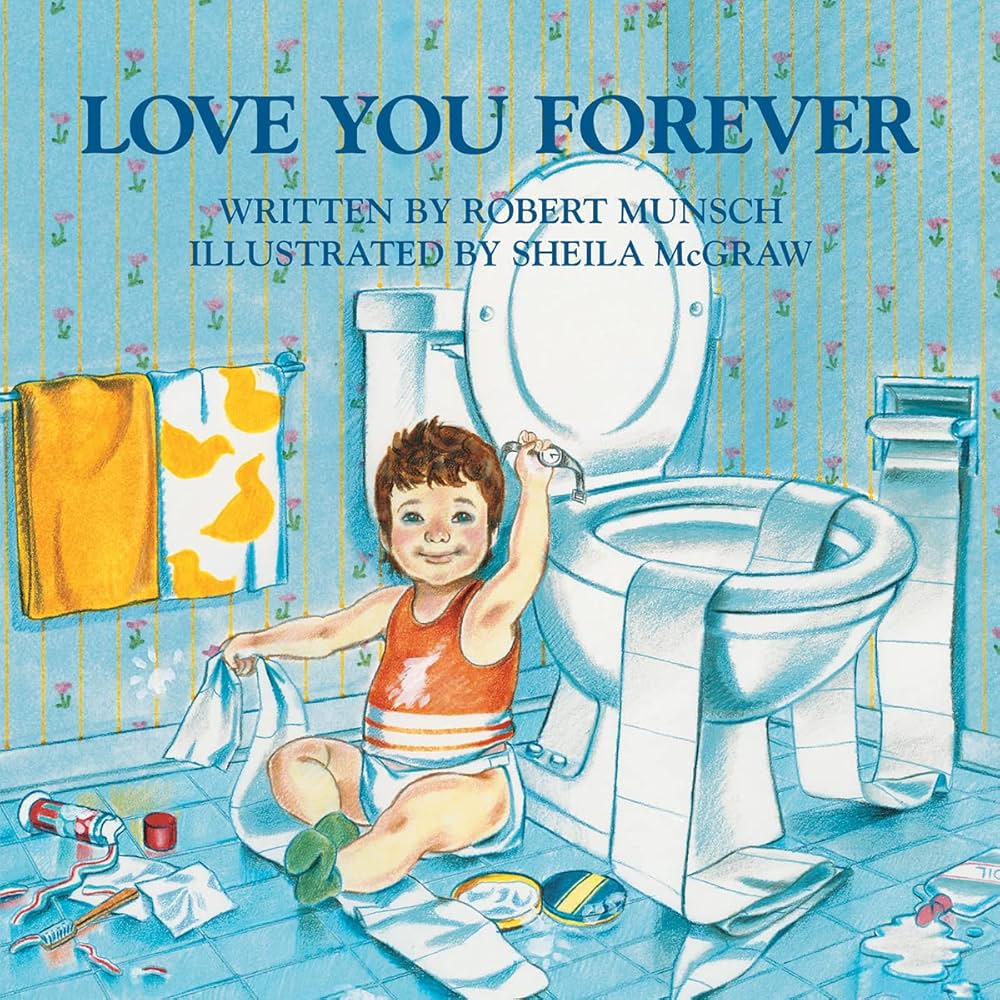
Estimated Sales: 30+ million copies worldwide
Reading Age: 3-8 years
Cultural Impact:
Became the go-to book for expressing parent-child love but also sparked debates about boundaries and appropriate parental behavior. Often given as gifts at baby showers and graduations.
The Message:
Parental love is eternal and unchanging, transcending age and circumstances. The circle of love continues from generation to generation.
Why It Sticks:
The repetitive lullaby creates deep emotional associations with safety and unconditional love. However, the image of a mother climbing through her adult son's window to rock him creates lasting psychological confusion about healthy boundaries that many adults still think about.
Surprising Backstory:
Munsch wrote this book as a way to cope with the loss of two stillborn babies. The original story was much longer and more personal. The book was initially rejected by publishers who thought the content was too intense for children. The famous refrain was actually a lullaby Munsch's wife sang to their children.
10. Guess How Much I Love You - Sam McBratney (1994)
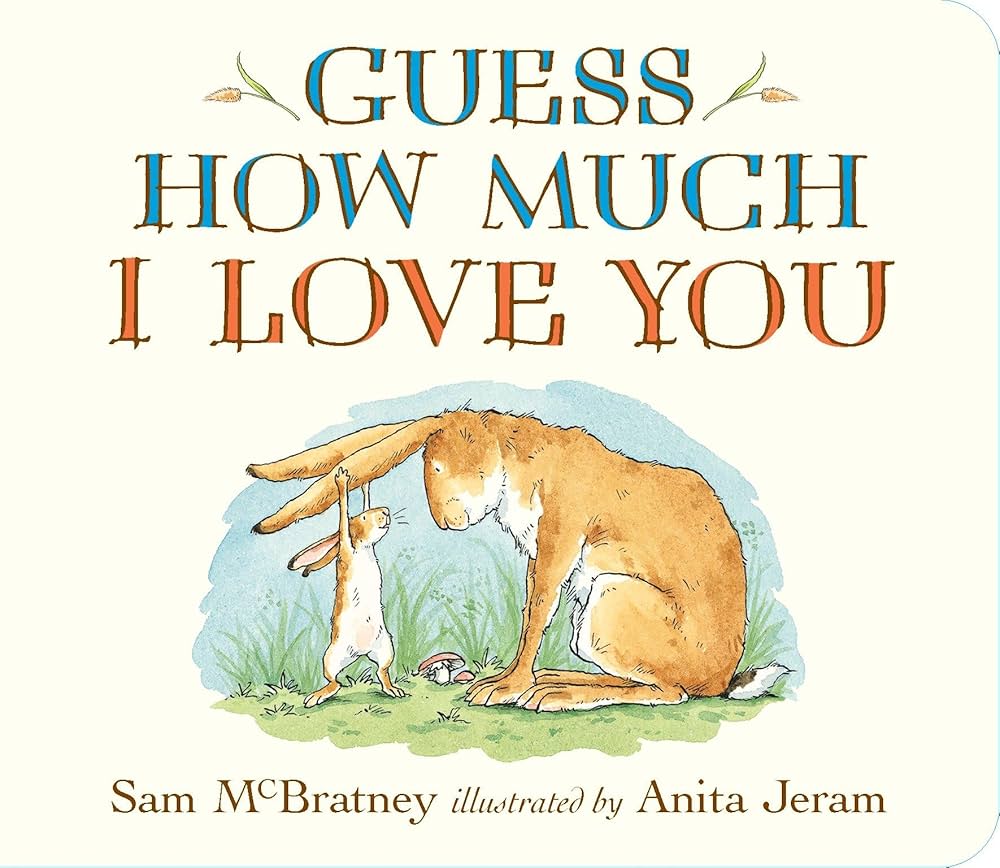
Estimated Sales: 43+ million copies worldwide
Reading Age: 2-6 years
Cultural Impact:
Became the modern standard for expressing love between parent and child. The phrase "to the moon and back" entered common language as shorthand for infinite love.
The Message:
Love isn't competitive, but expressing it creatively deepens the connection. There's always more love available than you initially think possible.
Why It Sticks:
The escalating competition between Big Nutbrown Hare and Little Nutbrown Hare creates a playful framework for expressing affection that families recreate in real life. The physical gestures (stretching arms wide, reaching high) create embodied memories that connect love with movement.
Surprising Backstory:
McBratney wrote this book in just a few hours after watching his own grandchildren play. The story was originally much shorter, but his editor suggested expanding the "love competition" between the characters. The book's success was largely driven by word-of-mouth recommendations from parents, not marketing campaigns.
11. The Rainbow Fish - Marcus Pfister (1992)
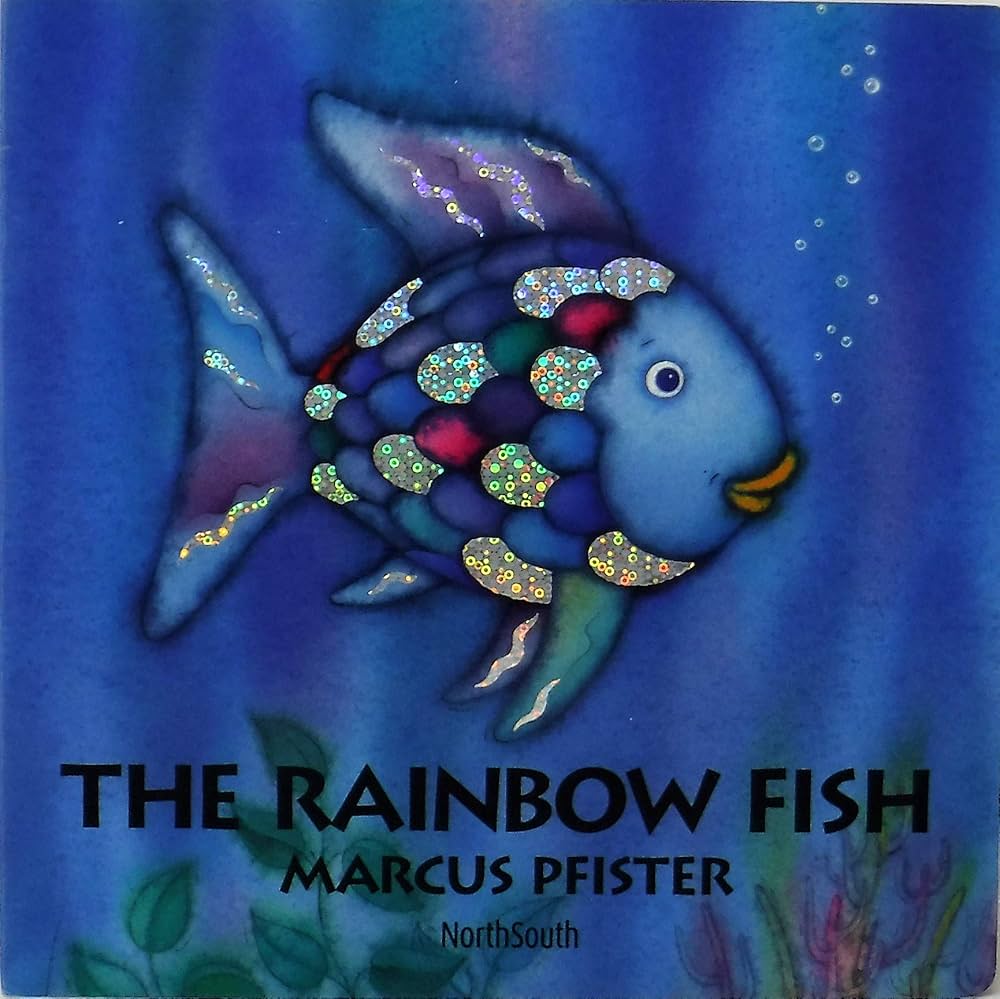
Estimated Sales: 30+ million copies worldwide
Reading Age: 3-7 years
Cultural Impact:
Sparked intense debates about sharing, individualism, and peer pressure. Became required reading in many schools while being banned in others for its controversial message about conformity.
The Message:
Sharing your special gifts brings happiness and friendship. Or, alternatively, you should give away what makes you unique to fit in with others.
Why It Sticks:
The holographic scales create a tactile, visual memory that makes the book physically unforgettable. The moral ambiguity creates lasting psychological tension — adults often remember feeling conflicted about whether Rainbow Fish made the right choice.
Surprising Backstory:
Pfister created the holographic scales by accident while experimenting with materials for a different project. In some interpretations, Rainbow Fish represents gifted children being pressured to "dumb down" to fit in.
12. Corduroy - Don Freeman (1968)
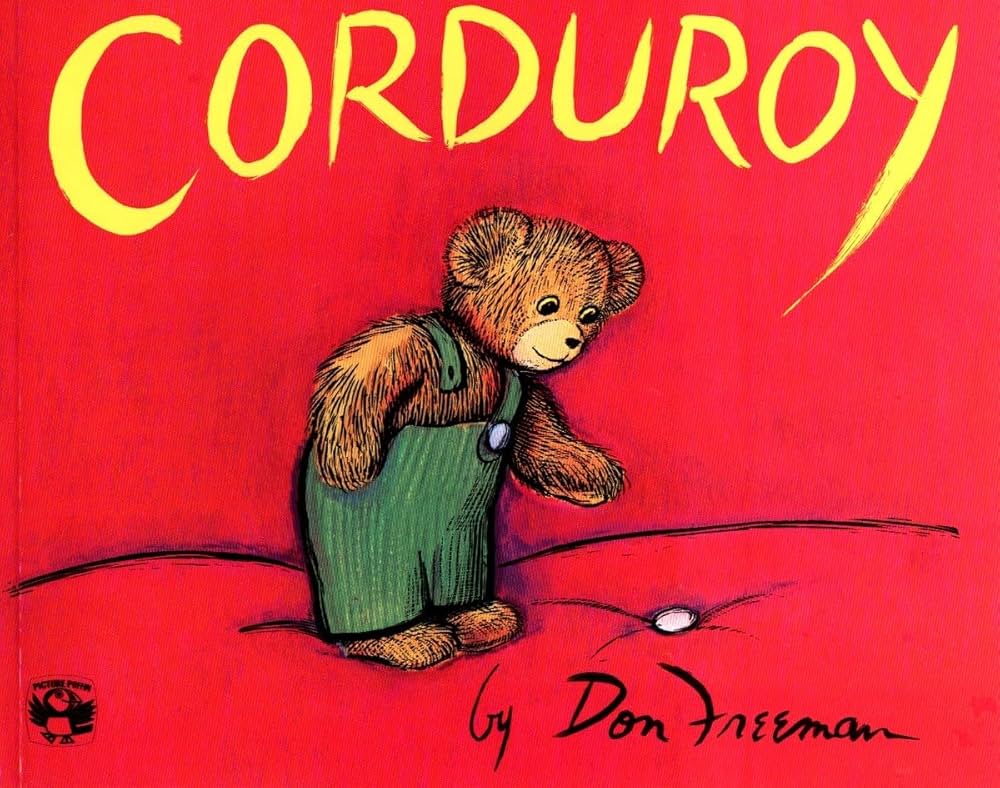
Estimated Sales: 20+ million copies worldwide
Reading Age: 3-7 years
Cultural Impact:
Became the definitive story about finding belonging and acceptance. Influenced discussions about poverty, worthiness, and unconditional love in children's literature.
The Message:
Everyone deserves love and belonging, regardless of their flaws or circumstances. Sometimes what you think is wrong with you doesn't matter to the people who truly care.
Why It Sticks:
The story validates feelings of being different or "broken" while providing hope for acceptance. Many adults remember identifying with Corduroy's insecurity about his missing button and his desire to be perfect for someone to love him.
Surprising Backstory:
Freeman based Corduroy on a teddy bear he saw in a department store window that had been there so long it looked worn and unloved. The book was initially rejected by several publishers who thought the story was too sad for children. Freeman drew inspiration from his own childhood feelings of not being good enough. The department store setting was based on real stores Freeman had worked in as a young artist trying to make ends meet.
13. If You Give a Mouse a Cookie - Laura Joffe Numeroff (1985)
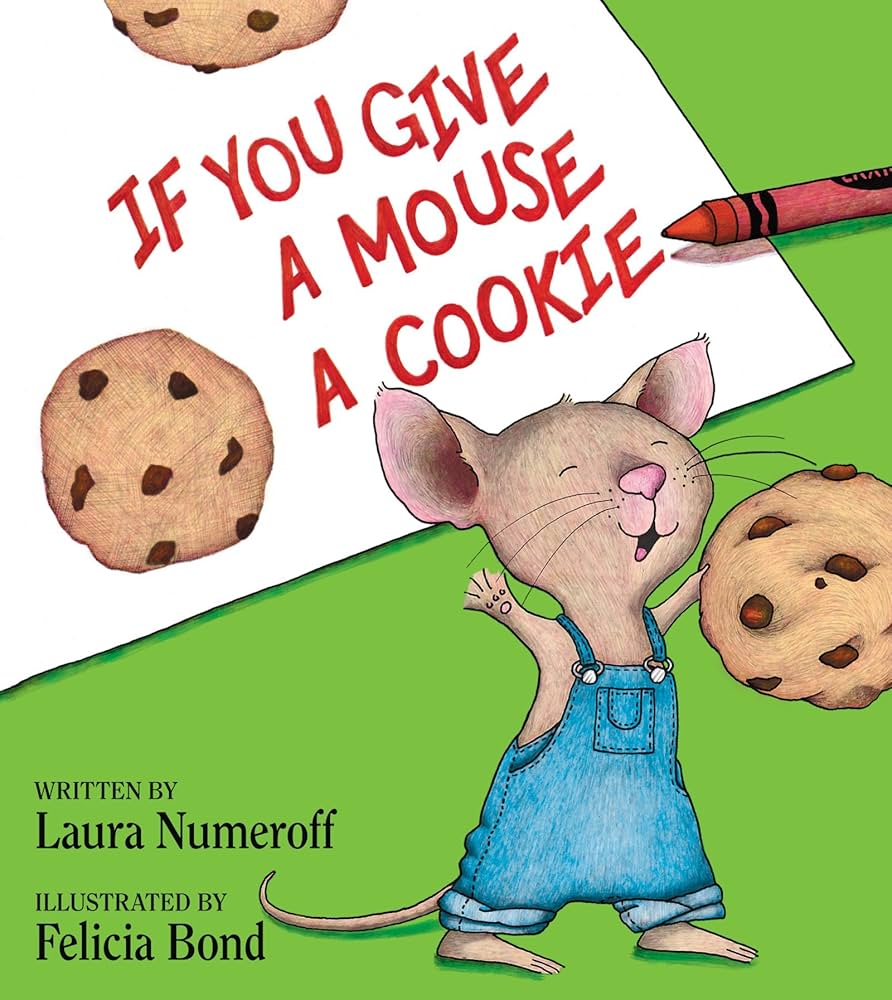
Estimated Sales: 14+ million copies worldwide
Reading Age: 2-6 years
Cultural Impact:
Created an entire series and became shorthand for cause-and-effect thinking. The phrase "if you give a mouse a cookie" entered common usage to describe how small actions can lead to escalating consequences.
The Message:
Actions have consequences, and one thing naturally leads to another. Sometimes helping someone creates more work, but the cycle of needs and responses is part of relationships.
Why It Sticks:
The circular structure mirrors how children's minds naturally work — one thought leading to another in an endless chain. Adults often use this book's logic to explain why simple requests sometimes turn into complicated projects.
Surprising Backstory:
Numeroff wrote this book after her editor asked her to write something about a mouse. She spent nine months working on just the first sentence because she wanted to capture the perfect cause-and-effect chain. The book was rejected multiple times before finding a publisher.
14. The Polar Express - Chris Van Allsburg (1985)
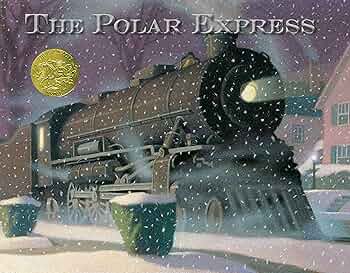
Estimated Sales: 7+ million copies worldwide
Reading Age: 4-10 years
Cultural Impact:
Became a Christmas classic that rivals traditional holiday stories. Spawned a major motion picture, theme park rides, and annual train experiences across the country.
The Message:
Magic exists for those who believe, but faith requires a choice. Growing up means deciding what's worth believing in, even without concrete proof.
Why It Sticks:
The book captures the exact moment when children begin questioning Santa's existence, creating powerful nostalgia for lost innocence. The bell that only believers can hear becomes a metaphor for faith that resonates with adults facing their own questions about belief and wonder.
Surprising Backstory:
Van Allsburg wrote this book for adults as much as children, deliberately creating a story about the loss of childhood wonder. The mysterious hobo character was inspired by Van Allsburg's own doubts about adulthood and responsibility. Van Allsburg has said he intentionally left the ending ambiguous — readers decide for themselves whether the boy really took a magical train ride or dreamed the whole thing.
15. Curious George - H.A. Rey (1941)
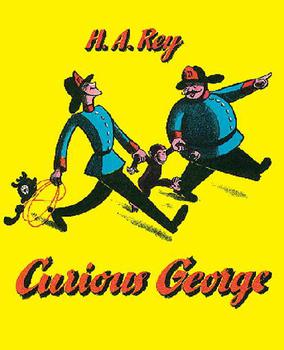
Estimated Sales: 75+ million copies worldwide
Reading Age: 3-7 years
Cultural Impact:
Created one of the most recognizable characters in children's literature and influenced how we think about curiosity, learning, and consequences. Became a franchise spanning books, TV shows, movies, and educational materials.
The Message:
Curiosity is natural and valuable, even when it leads to trouble. Learning comes through exploration and making mistakes, not from following rules perfectly.
Why It Sticks:
George's mischievous adventures mirror children's own impulsive behavior and desire to explore the world. The Man in the Yellow Hat represents patient, understanding authority that doesn't punish curiosity, creating an idealized parent-child relationship many adults remember fondly.
Surprising Backstory:
H.A. Rey and his wife Margret fled Nazi-occupied Paris on bicycles carrying the original Curious George manuscript. They literally pedaled their way to safety while protecting what would become one of the world's most beloved children's characters.
16. Madeline - Ludwig Bemelmans (1939)
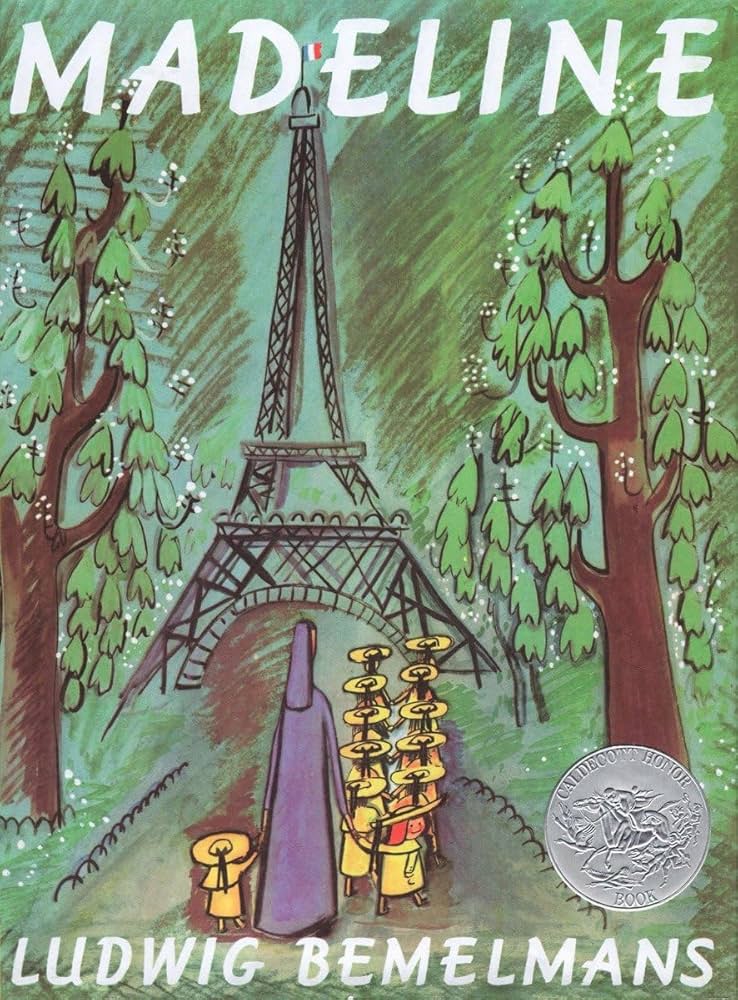
Estimated Sales: 9+ million copies worldwide
Reading Age: 4-8 years
Cultural Impact:
Established the "spunky girl" archetype in children's literature and made Paris synonymous with childhood adventure. Influenced fashion, travel, and how we think about independent young women.
The Message:
Being different can be scary but also exciting. Sometimes the smallest person can be the bravest, and adventure often comes from being willing to stand out from the crowd.
Why It Sticks:
The rhythmic verse structure makes the story highly memorable, while Madeline's fearless personality creates a lasting impression of female courage and independence. Many adults remember wanting to be as brave and confident as Madeline.
Surprising Backstory:
Bemelmans wrote Madeline after being hospitalized following a bicycle accident. He was inspired by a young girl in the hospital bed next to him who was about to have her appendix removed but showed no fear.
17. The Little Engine That Could - Watty Piper (1930)
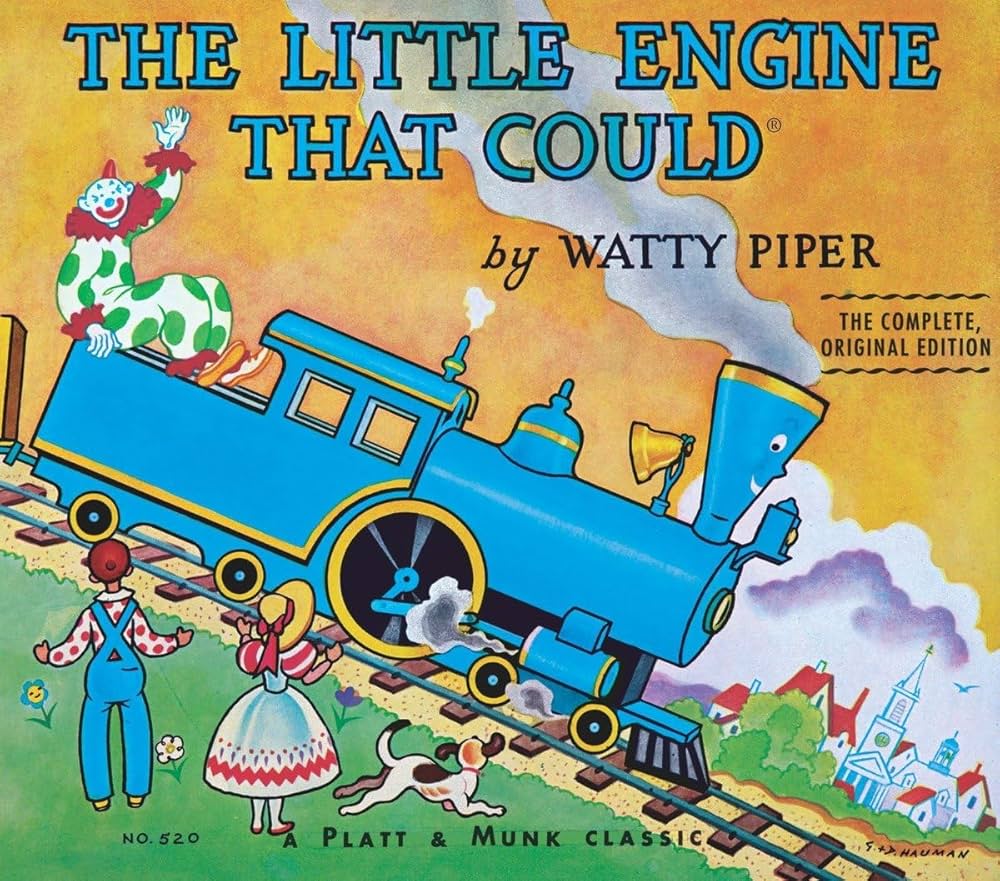
Estimated Sales: 6+ million copies worldwide
Reading Age: 3-8 years
Cultural Impact:
Became the definitive story about perseverance and positive thinking. The phrase "I think I can" entered American vernacular as shorthand for determination and self-belief.
The Message:
Persistence and positive attitude can overcome seemingly impossible obstacles. Sometimes the smallest or least experienced person can succeed where others have failed.
Why It Sticks:
The repetitive "I think I can" mantra becomes internalized as a real-life coping mechanism. Adults often find themselves repeating this phrase during challenging situations, making it one of the most practically applicable children's stories.
Surprising Backstory:
The story is actually a retelling of a much older folk tale, but "Watty Piper" was a pseudonym — no one knows who actually wrote this version. The book was created to teach children about determination during the Great Depression, when perseverance was essential for survival.
18. Blueberries for Sal - Robert McCloskey (1948)

Estimated Sales: 3+ million copies worldwide
Reading Age: 4-8 years
Cultural Impact:
Became the gold standard for stories about nature, family bonding, and childhood independence. Influenced how American families think about outdoor adventures and seasonal activities.
The Message:
Exploring nature is safe and rewarding when you're with family. Children and young animals have similar needs and behaviors, connecting humans to the natural world.
Why It Sticks:
The simple pleasure of berry picking creates sensory memories that many adults associate with childhood summers and family togetherness. The parallel structure of Sal and the bear cub getting mixed up creates lasting humor and warmth.
Surprising Backstory:
McCloskey based this story on real experiences with his own daughter picking blueberries in Maine. He actually encountered a mother bear and her cub while researching the book, which inspired the parallel family structure. The book was created using a stone lithography technique that took McCloskey over a year to complete. His attention to natural detail came from his belief that children deserved accurate, beautiful depictions of the real world.
19. Make Way for Ducklings - Robert McCloskey (1941)
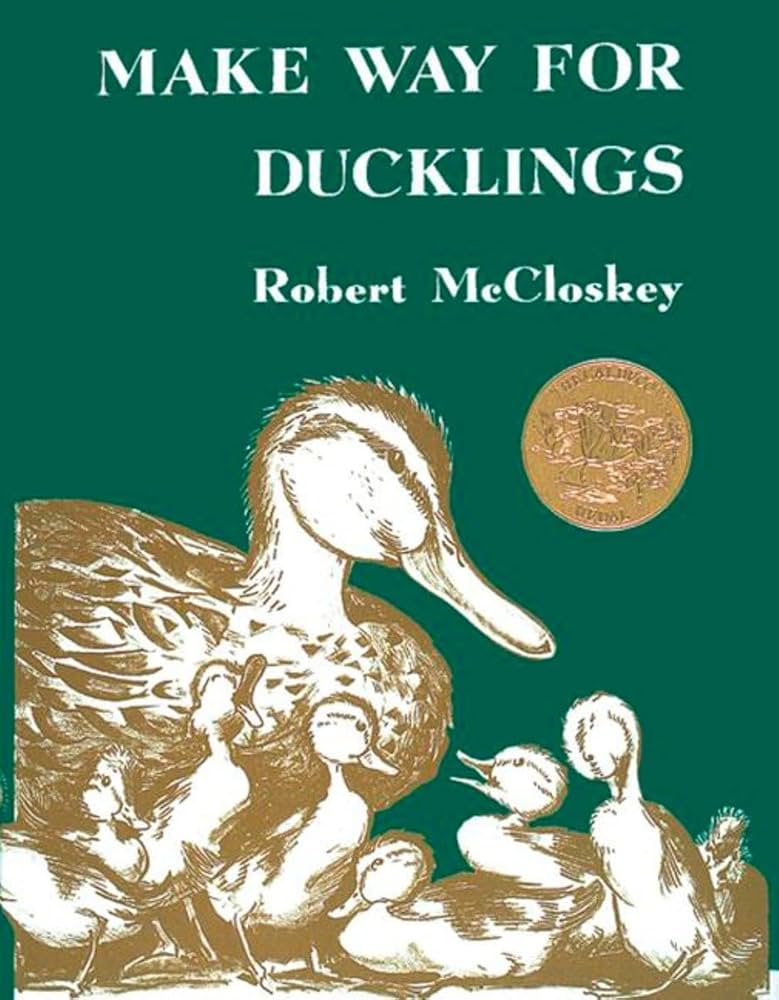
Estimated Sales: 2+ million copies worldwide
Reading Age: 4-8 years
Cultural Impact:
Became synonymous with Boston and urban wildlife conservation. Created a lasting image of how cities can coexist peacefully with nature. The Boston Public Garden now has bronze statues of the duck family.
The Message:
Home is where your family feels safe and welcome. Community support helps families thrive, even in challenging urban environments.
Why It Sticks:
The story validates children's need for security while celebrating family courage and community kindness. The detailed illustrations of Boston create a sense of place that makes readers feel like they've actually walked those streets with the duck family.
Surprising Backstory:
McCloskey spent months in Boston Common studying duck behavior and sketching the city's architecture to get every detail accurate. He brought live ducks into his apartment to observe their movements, much to his neighbors' dismay. Police actually did help duck families cross busy streets, making the story's community cooperation realistic rather than fantastical.
20. The Story of Ferdinand - Munro Leaf (1936)
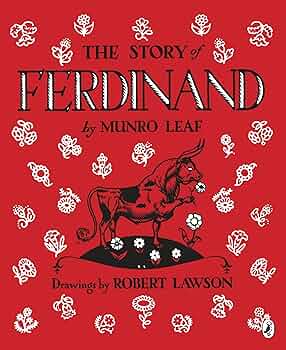
Estimated Sales: 3+ million copies worldwide
Reading Age: 4-8 years
Cultural Impact:
Became a symbol of pacifism and nonconformity. Banned by Franco in Spain and Hitler in Germany for its anti-war message. Influenced discussions about masculinity, violence, and choosing your own path.
The Message:
It's okay to be different from what others expect. You don't have to be aggressive or violent to be valuable. Being true to yourself matters more than conforming to societal expectations.
Why It Sticks:
Ferdinand's preference for smelling flowers over fighting bulls validates children who don't fit traditional gender roles or aggressive expectations. Adults often remember this as permission to reject violence and competition in favor of peace and personal interests.
Surprising Backstory:
Leaf wrote this book in just 40 minutes on a rainy Sunday afternoon. It was immediately controversial — banned by fascist governments for promoting pacifism while being criticized by some Americans for discouraging patriotic fighting spirit before World War II. The book was also embraced by conscientious objectors and peace activists.
21. Frog and Toad Are Friends - Arnold Lobel (1970)
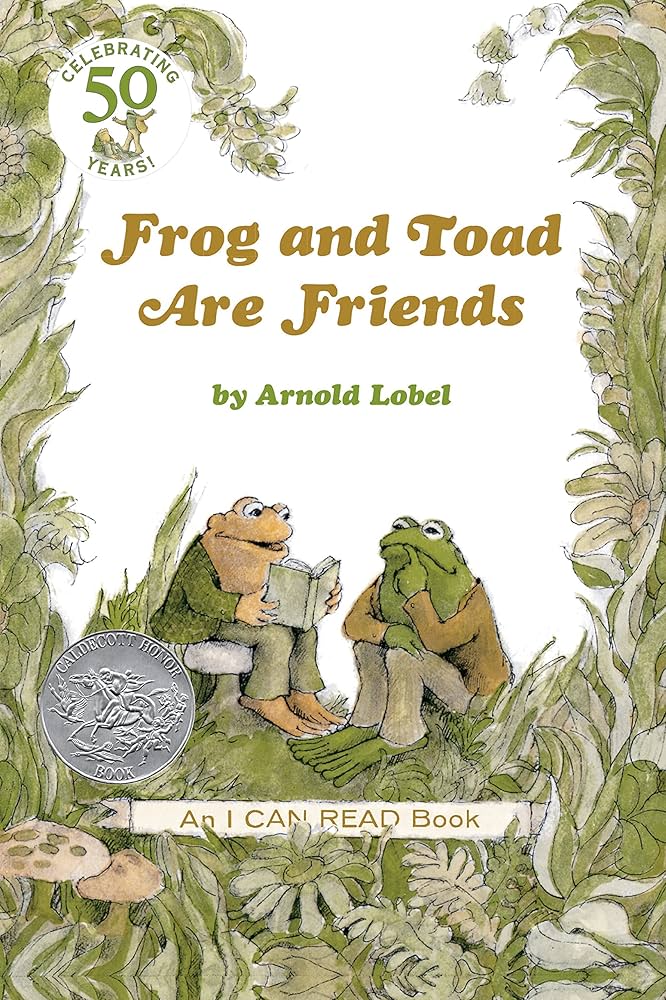
Estimated Sales: 8+ million copies worldwide
Reading Age: 6-10 years
Cultural Impact:
Set the standard for early chapter books and friendship stories. Influenced how children's literature depicts same-sex relationships and emotional intimacy between friends.
The Message:
True friendship involves accepting each other's differences, supporting each other through difficulties, and finding joy in simple shared experiences.
Why It Sticks:
The stories capture the complexity of real friendship — including irritation, misunderstandings, and unconditional love. Many adults recognize their own friendships in Frog and Toad's relationship dynamics.
Surprising Backstory:
Lobel created Frog and Toad while struggling with his own identity as a gay man in an era when homosexuality was largely hidden. Many readers interpret the characters' deep emotional connection as a representation of same-sex love, though Lobel never explicitly confirmed this. The book was groundbreaking for showing male characters expressing emotions, vulnerability, and care for each other without shame.
22. Amelia Bedelia - Peggy Parish (1963)
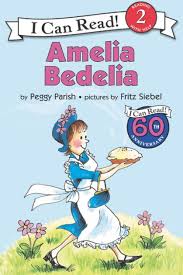
Estimated Sales: 35+ million copies worldwide
Reading Age: 6-10 years
Cultural Impact:
Became the gold standard for wordplay and literal interpretation humor in children's literature. Influenced how educators teach about language, context, and communication.
The Message:
Words can be tricky and mean different things depending on context. Good intentions matter even when you make mistakes. Communication requires understanding, not just following instructions.
Why It Sticks:
Amelia Bedelia's literal interpretations mirror how children's brains actually process language, making her mistakes feel relatable rather than stupid. Adults often remember the humor while appreciating the linguistic lessons about idioms and context.
Surprising Backstory:
Parish based Amelia Bedelia on her own experiences as a literal-minded child who often misunderstood adult instructions. The character was inspired by Parish's grandmother's housekeeper, who had a similar tendency to interpret everything literally.
23. The Magic Tree House series (first book) - Mary Pope Osborne (1992)
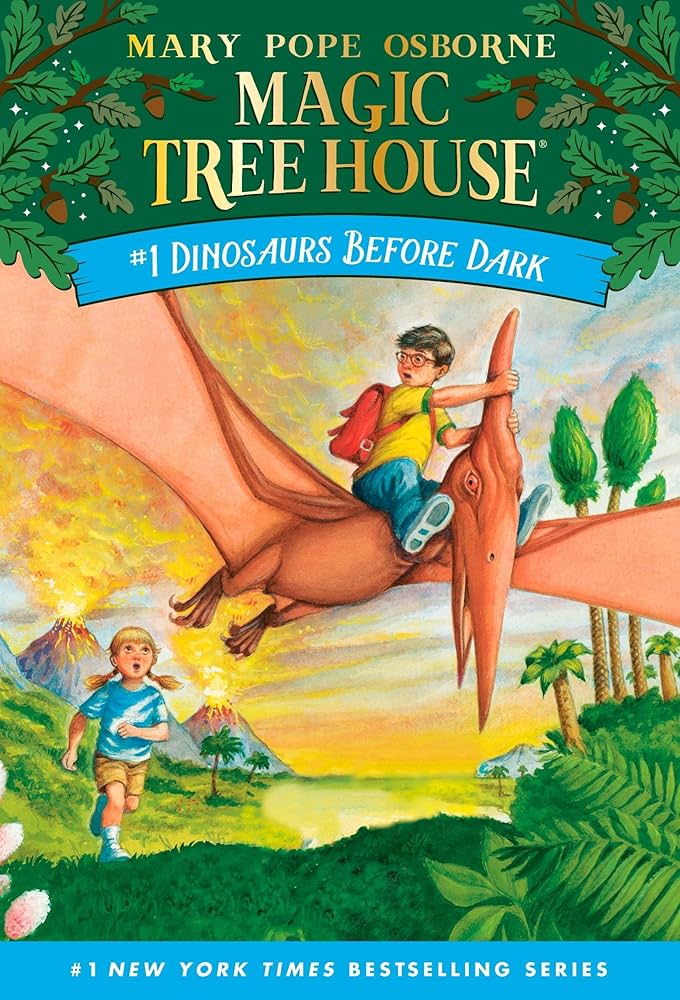
Estimated Sales: 134+ million copies worldwide
Reading Age: 6-10 years
Cultural Impact:
Revolutionized children's series publishing and made history accessible to reluctant readers. Created a template for educational adventure stories that combine entertainment with learning.
The Message:
Learning about history and different cultures is an adventure, not a chore. Knowledge gives you power to solve problems and help others. Reading literally opens doors to new worlds.
Why It Sticks:
The series makes abstract historical periods feel real and accessible by placing modern children in those settings. The combination of magic and education creates positive associations with learning that many adults carry forward.
Surprising Backstory:
Osborne wrote the first book after her editor challenged her to create a series that would hook reluctant readers, especially boys. She researched extensively for each book, often traveling to the locations she wrote about. The series was initially rejected by several publishers who thought combining fantasy with historical facts would confuse children.
24. Junie B. Jones series (first book) - Barbara Park (1992)
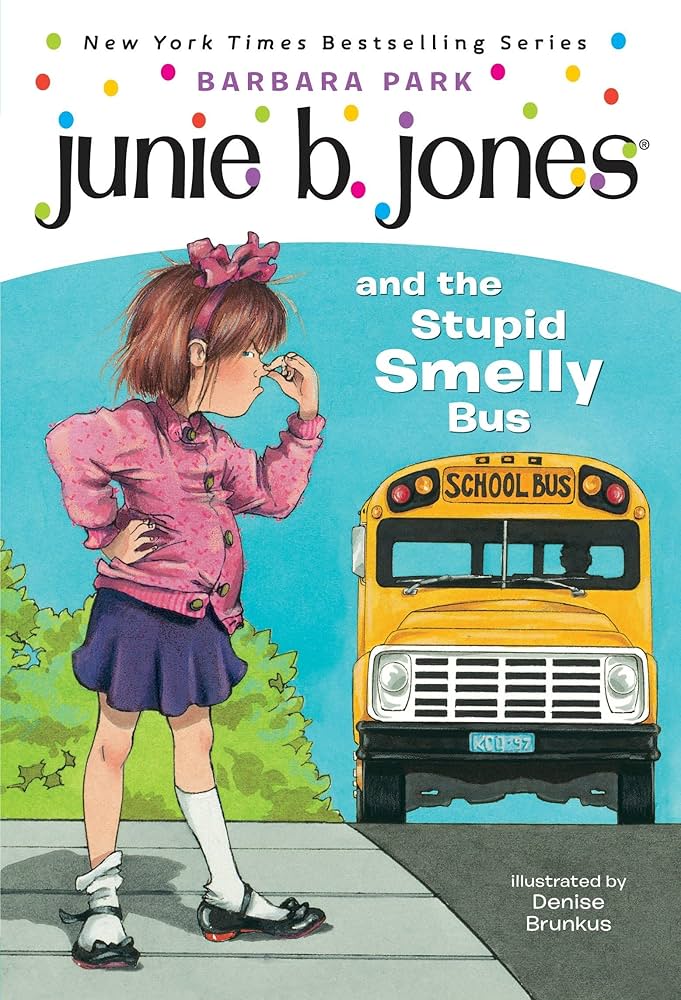
Estimated Sales: 55+ million copies worldwide
Reading Age: 6-9 years
Cultural Impact:
Created controversy for its protagonist's grammar mistakes and behavior while becoming beloved by children for its authentic kid voice. Sparked debates about whether children's books should model perfect behavior or reflect reality.
The Message:
It's okay to make mistakes, ask questions, and see the world differently. Growing up involves learning from experience, not being perfect from the start.
Why It Sticks:
Junie B.'s voice perfectly captures how children actually think and speak, making readers feel understood and validated. Adults often remember the humor and relatability even if they worried about the grammar.
Surprising Backstory:
Park deliberately wrote Junie B. with grammatical errors and childish reasoning to authentically represent how kindergarteners actually talk and think. The series faced criticism from educators and parents who worried children would copy Junie B.'s mistakes, leading to bans in some schools. Park defended her choice, arguing that children deserve to see themselves reflected in literature, flaws and all.
25. The Boxcar Children - Gertrude Chandler Warner (1924)

Estimated Sales: 50+ million copies worldwide
Reading Age: 7-12 years
Cultural Impact:
Pioneered the children's mystery genre and influenced how kids think about independence, family, and problem-solving. Created a template for siblings working together to overcome challenges.
The Message:
Family bonds are stronger than circumstances. Children are more capable and resourceful than adults often believe. Home is about being together, not having perfect conditions.
Why It Sticks:
The fantasy of living independently while maintaining family connections appeals to children's desire for both freedom and security. Many adults remember wishing they could live in a boxcar with their siblings.
Surprising Backstory:
Warner was a first-grade teacher who wrote this book because she couldn't find engaging stories for beginning readers. The original 1924 version was much darker, with the children's parents actually dead rather than just absent. Warner softened the story in later revisions after realizing it was too frightening for young readers.
26. Charlotte's Web - E.B. White (1952)
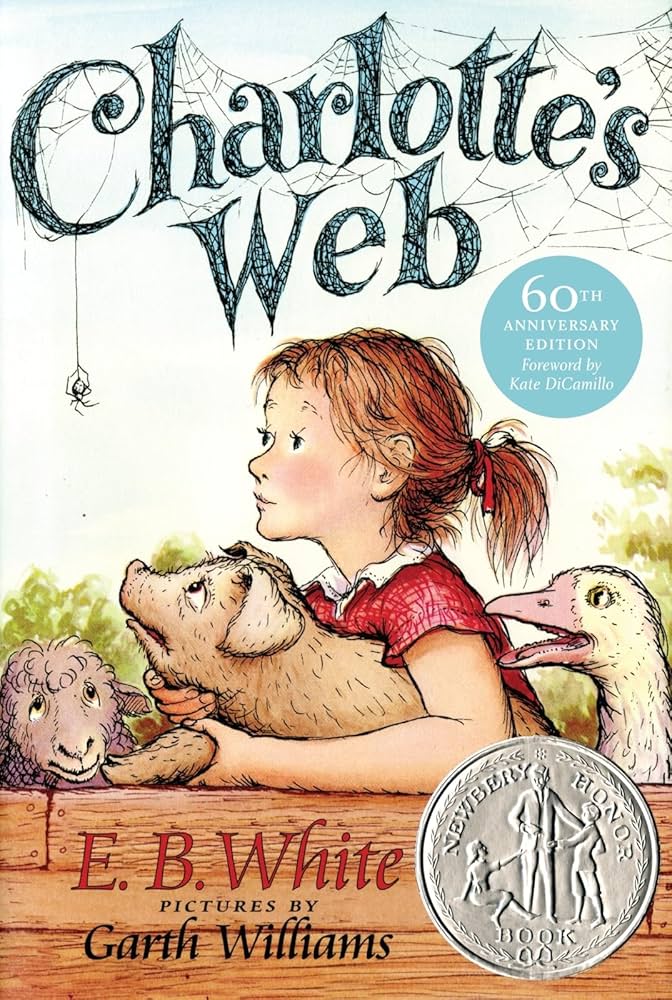
Estimated Sales: 45+ million copies worldwide
Reading Age: 8-12 years
Cultural Impact:
Became the definitive children's novel about friendship, death, and the cycle of life. Influenced how children's literature approaches difficult topics like mortality and sacrifice.
The Message:
True friendship involves sacrifice and selflessness. Death is part of life, but love and memory make us immortal. Words have power to change how others see the world.
Why It Sticks:
Charlotte's death creates many children's first profound experience with grief over a fictional character. The book handles mortality with honesty while providing comfort through Charlotte's legacy and continuing friendship.
Surprising Backstory:
White wrote this book after observing a real spider in his barn and wondering what would happen if he could communicate with it. He spent months studying spider behavior and web construction to make Charlotte's character scientifically accurate.
27. The Secret Garden - Frances Hodgson Burnett (1911)
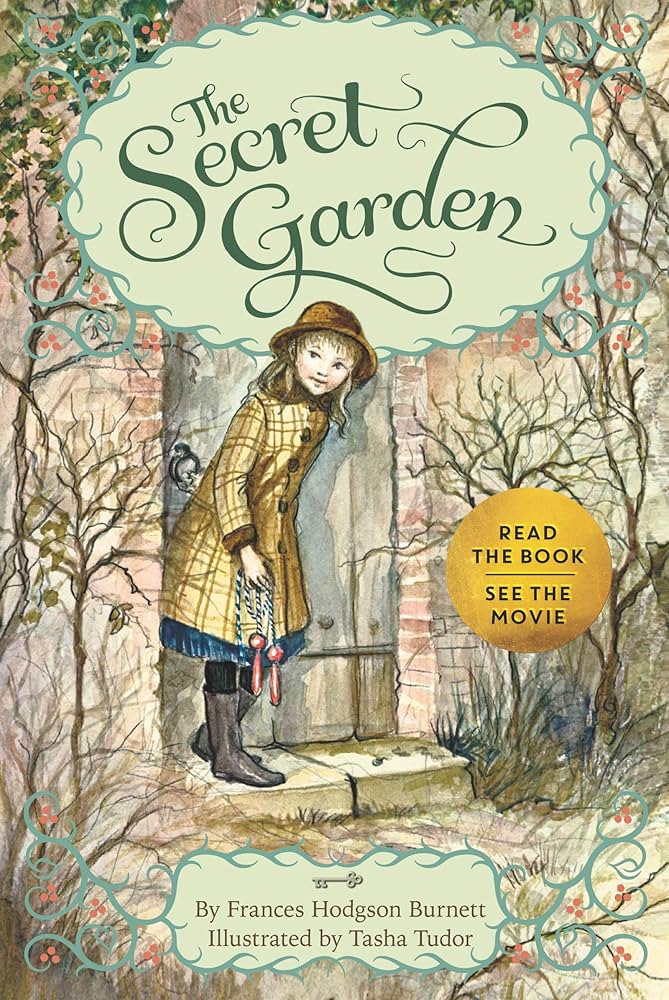
Estimated Sales: 3+ million copies worldwide
Reading Age: 8-12 years
Cultural Impact:
Established themes of healing, growth, and transformation that influenced generations of children's literature. Created lasting associations between gardens, secrecy, and personal development.
The Message:
Caring for something outside yourself promotes inner healing and growth. Friendship and purpose can transform even the most damaged people. Nature has restorative power for both physical and emotional health.
Why It Sticks:
The combination of mystery, transformation, and the appeal of secret spaces creates a powerful fantasy about personal agency and healing. Many adults remember wanting to find their own secret garden.
Surprising Backstory:
Burnett wrote this book while dealing with her own depression and health problems, using gardening as therapy. The story was inspired by her own experiences restoring a garden at her English estate. Initially dismissed by critics as sentimental, the book gained literary respect over time as scholars recognized its sophisticated treatment of trauma, healing, and child psychology. The garden setting was based on a real walled garden at Great Maytham Hall in Kent, England.
The Books That Made You Who You Are
These stories became part of your psychological architecture. They shaped how you think about friendship, courage, love, and what it means to grow up. Some taught healthy lessons, others sparked decades of therapy-worthy debates about boundaries and self-worth.
The books that stick with us aren't always the best ones — they're the ones that hit us at exactly the right developmental moment.
.png)


